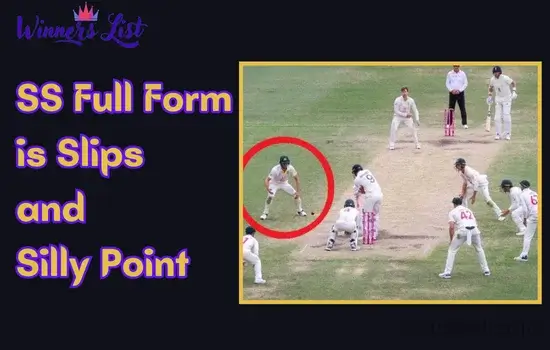Cricket, often referred to as the gentleman’s game, is laden with its own set of jargon and abbreviations. One such mysterious acronym that echoes around the cricket field is “SS.” To the uninitiated, it may sound like a secret code, but in the cricketing realm, SS has a very specific and crucial meaning.
SS Stands For:
In cricket, SS stands for “Slips and Silly Point.” These are fielding positions strategically placed to catch batsmen off guard, adding an extra layer of complexity to the game. Let’s delve into the significance of SS and how it influences the dynamics of a cricket match.
Slips:
Slips are a set of fielding positions behind the batsman, primarily focused on catching the ball if it edges off the bat. The slips are usually arranged in a diagonal line, with players standing close to each other. The number of slips can vary, with teams opting for one, two, or even more depending on the team’s strategy and the conditions of the pitch.
In the Indian cricket context, the slips are often a spectacle of anticipation and precision. Fielders stationed in the slips need to be agile, quick on their feet, and possess exceptional hand-eye coordination. The slips play a crucial role in capitalizing on the slightest mistakes made by the batsman, turning an edge into an opportunity for dismissal.
Silly Point:
Moving from the slips, we venture into the territory of the Silly Point. Silly Point is an infield position, situated close to the batsman, almost in a catching distance. The primary objective of placing a fielder at Silly Point is to take advantage of the batsman’s vulnerability against spin or bounce.
In the Indian cricketing scenario, where spinners often dominate, the Silly Point position becomes a strategic move. A skilled fielder at Silly Point can create pressure on the batsman, forcing errors and providing the bowler with a chance to secure a wicket. It’s a position that demands courage, quick reflexes, and a keen understanding of the batsman’s mindset.
The Art of SS Fielding:
Fielding in the SS positions requires a unique set of skills. Players need to be attuned to the game, predicting the batsman’s movements and reacting swiftly to any opportunities that may arise. The slip cordon, in particular, needs to work in tandem, communicating effectively to ensure that no chance goes begging.
In the diverse tapestry of Indian cricket, where conditions can vary from flat tracks to spinning surfaces, the SS positions become dynamic tools for the captain to deploy strategically. The choice of slips and the Silly Point is influenced not only by the strengths and weaknesses of the opposition batsmen but also by the nature of the pitch and the bowler’s style.
SS and the Changing Game:
As cricket evolves, so does the significance of SS in shaping the outcome of a match. Modern-day cricket witnesses innovations in field placements and strategies, but the essence of SS remains timeless. The battle between bat and ball is not just confined to the pitch; it extends to the strategic placement of fielders, especially those stationed in the slips and at Silly Point.
In conclusion, SS in cricket, denoting Slips and Silly Point, adds a layer of suspense and excitement to the game. It’s a testament to the intricate tactics employed by teams to gain an upper hand. The next time you see fielders strategically placed behind the stumps, remember that SS is not just an acronym; it’s a dynamic aspect of cricket that adds to the drama and unpredictability of the gentleman’s game.

Hello, I’m Kapil Kumar, a seasoned SEO expert and blogger at WinnersList.in. My mission is to spotlight exceptional individuals and organizations across various domains. Through curated lists, profiles, and inspiring stories, I aim to celebrate outstanding achievements and inspire the next generation of champions. Join me in this journey.

